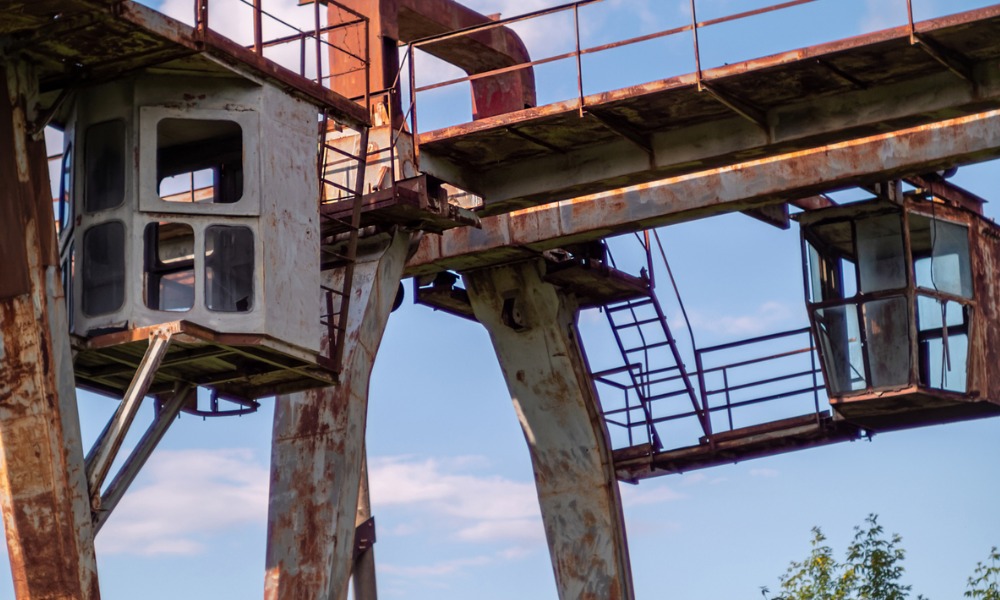Canadian operators 'buying all the leftovers' from American companies

Cranes in Canada are old and often fail safety inspections according to Greg Teslia, president of Crane Safety & Inspections Inc. "The biggest problem they have is condition... they're old cranes, they're not being very well maintained."
Teslia has been in the crane game since the late 1970’s. He was born and raised in Toronto, lived in several Canadian cities, and then moved to Tennessee. He’s been operating his crane inspection business since 2002.
He says Canadian crane owners and operators are often using cranes that were built in the United States, used in America during their prime, and then shipped north to be put to work in their senior years.
"They're buying all the leftovers the United States wants to get rid of… and they sell them to Canadian subcontractors and contractors…and then they just continue to put a band-aid on them, but the crane doesn't last forever."
Teslia says cranes are like cars and after a certain number of kilometres, they start to break down. A crane lifespan is based on cycles, and most are built for 500,000 cycles. A crane picks up an object, places it in the desired position, and repeats the process. Every repetition is a cycle. Teslia says unlike a car, there’s nothing to monitor how many cycles a crane has completed.
"They try to maintain them,” says Teslia, “but you can't take an old Formula One race car and keep racing it every year. It doesn't work." Teslia estimates he’s inspected about 100 tower cranes in Canada and says only a handful have passed inspection.
Teslia has been hired by Vancouver-based developer, Townline, to inspect all its cranes. Melissa O’Doherty is the director of health and safety at Townline and says they realized they had a problem after a near-miss incident involving a crane at one of their work sites in the spring of 2023.
"We ended up having to actually take the crane out and put up a new crane because they couldn't find the problem,” explains O’Doherty. “Even if they did, our workers just weren't comfortable working with that crane anymore, and they were always on edge around it."
British Columbia has a problem with crane safety and just about every player in the province involved with workplace safety and the use of cranes has acknowledged improvements are needed.
O’Doherty says the conversation often focuses on training and “we’re seeing a lot of blame put on operators.” But she says, “nobody is checking the checkers”, suggesting there needs to be a greater focus on inspecting cranes after they’ve been deemed safe for erection by engineers and operators.
O’Doherty says they hired Teslia because of his credentials, but also because of his straightforward approach.
“He holds nothing back. He just says it how he sees it and then heads on back out to his next job…He doesn't have to worry about upsetting somebody.” O’Doherty says when Teslia first conducted inspections the company discovered two cranes in use on their sites were manufactured in the 1970’s. “There's a very large number of these cranes that are all built pre 2000 and older," says O’Doherty.
Townline has seven projects currently underway in British Columbia requiring cranes and will soon have an eighth. The company contracts out its crane operations, which means it had to tell these operators Teslia would be inspecting their cranes and if they want the job they must comply.
“Everybody had a big heads up that we're going to be doing this and we told them what our requirements were going to be up front,” explains O’Doherty. “As a prime contractor, we have the responsibility to ensure everyone on site is safe.”
O’Doherty says there were “mixed reactions”, but once Teslia explained exactly what was wrong “they all responded quite well.” She says every recommendation made by Teslia has been followed. Townline plans to bring him back to British Columbia on a quarterly basis to inspect its cranes.
With thousands of construction projects underway across the country, one must wonder, how many old cranes are in operation? And are they safe?





